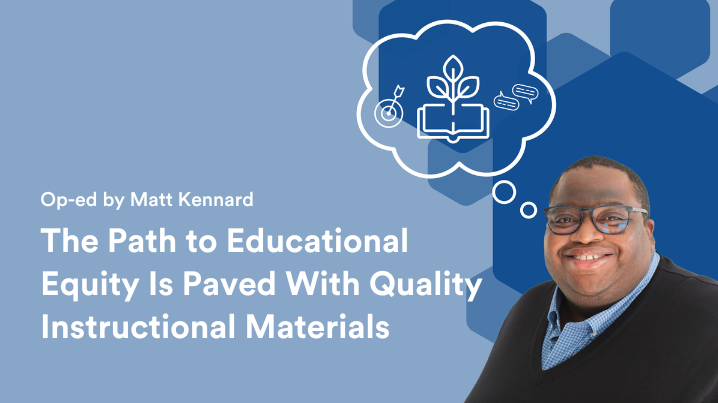In the ever-evolving landscape of education, the pursuit of equity remains a central tenet of our collective mission. As the CEO of a company dedicated to providing professional development for schools and districts, I firmly believe that achieving true equity in the classroom begins with a critical examination of “The Opportunity Myth,” which continues to perpetuate disparities in educational outcomes among our students. The antidote? Equitable access to high-quality instructional materials.
On paper, American students all have equal access to a quality education–the law says so. The key legislation in this regard is the “Elementary and Secondary Education Act” (ESEA). Originally enacted in 1965, it has undergone several reauthorizations, with the most recent being the “Every Student Succeeds Act” (ESSA) in 2015. The primary goal of ESEA/ESSA is to ensure that all students, regardless of their background or socioeconomic status, have access to a quality education and that schools are held accountable for their performance in educating all students. The law focuses on narrowing achievement gaps and improving educational outcomes for disadvantaged students.
But what does this look like, in practice?

Our friends at the nonprofit The New Teacher Project coined the term, “The Opportunity Myth,” to describe the belief that all students, regardless of their background or ZIP code, have access to an equitable education. But reality often falls short of this ideal. While we champion the importance of equal access to education, the disparities in learning outcomes persist. It’s time to take a hard look at the root causes of this persistent inequity.
One of the primary culprits in perpetuating the disparity is the inconsistent quality of instructional materials used in classrooms across the nation. For too long, educators have been faced with a patchwork of resources that vary widely in rigor, alignment with standards, and cultural relevance. This variability not only hampers the effectiveness of teaching but also exacerbates the achievement gap. It’s a glaring inequity that we cannot ignore.
High-quality instructional materials, grounded in research and thoughtfully designed, hold the key to upholding the ideals set forth in ESSA. They empower teachers with the tools they need to provide an equitable education to every student, regardless of their background. Here’s why they matter:
Alignment with Standards: High-quality instructional materials are aligned with state and national standards. This means that teachers can trust that the content they are delivering is designed to help students meet the academic expectations set for their grade level. Equity begins with a level playing field, and aligned materials ensure that all students receive an education that prepares them for success.
Consistency and Coherence: These materials provide a coherent instructional journey, ensuring that students build knowledge and skills progressively. Consistency is crucial, particularly for students in underserved communities who often experience disruptions in their education due to factors beyond their control.
Professional Development: Quality materials are accompanied by professional development opportunities that empower teachers with the skills and knowledge they need to effectively implement them. Investing in professional development is an investment in our educators, who are the lifeblood of our education system.
Differentiation and Personalization: High-quality materials take into account the diverse backgrounds and experiences of our students. They reflect the realities of our classrooms and honor the richness of our cultural tapestry. Equity cannot exist in a vacuum; it must embrace and celebrate our differences.
Assessment and Feedback: These materials often include assessments and feedback mechanisms that help teachers track student progress and adjust their instruction accordingly. This data-driven approach allows for targeted interventions to support struggling students.
Achieving equity in education is not a simple task, nor can it be realized overnight. However, we have a moral obligation to do everything in our power to bridge the gap. And high-quality instructional materials represent a critical step in the right direction.
It is important to note that implementing these materials requires a coordinated effort among educators, administrators, policymakers, and the private sector. Collaboration is the linchpin of our success in transforming the educational landscape. We must work together to ensure that every student receives the education they deserve.
While providing a truly equitable education remains a daunting challenge, it’s not insurmountable. We can achieve it by equipping our teachers with high-quality instructional materials and the professional development necessary to use them effectively. Only then are we truly working towards equity in our classrooms. It is a journey worth embarking upon, and one that we, as educators and advocates for change, must embrace with unwavering commitment. Our students deserve nothing less.








